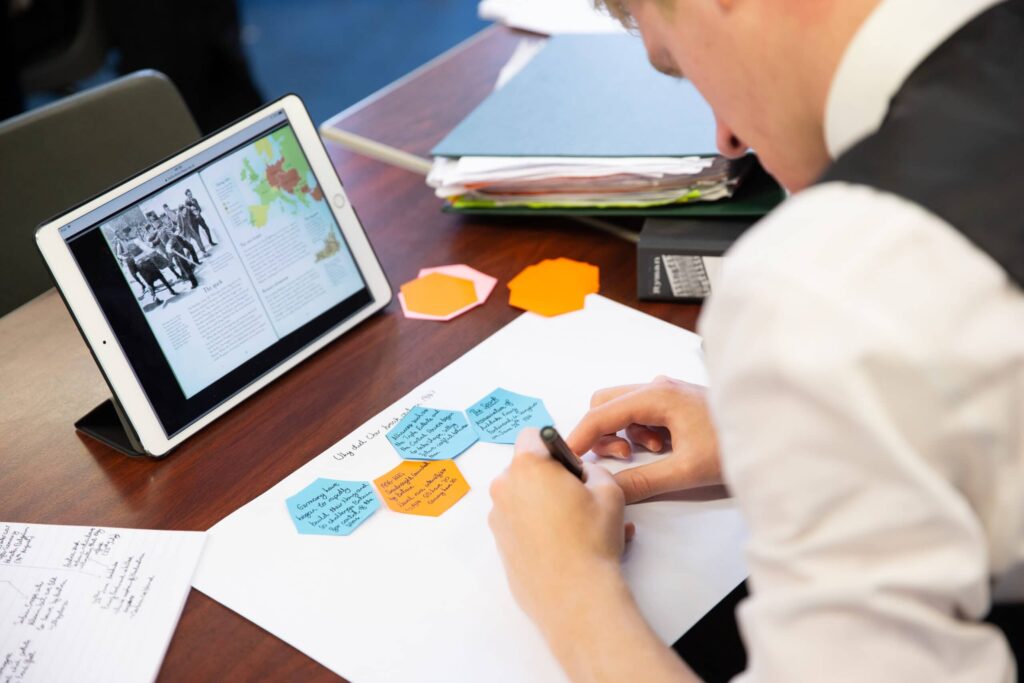This week’s blog post is based on a webinar given by Peps Mccrea who is the Dean of Learning Design at the Ambition Institute, where he oversees the design of the programmes for teachers and teacher educators. He is also the Director of Research and Development at Steplab, which is an online platform that helps school implement instructional coaching. This blog post summarises Mccrea’s ideas on the science of motivation and what we can do to boost pupil attention and effort at school.
Mccrea begins by outlining the five key ideas in motivation for learning:
1. Motivation is a system for allocating attention.
2. Motivation is not a given in schools.
3. Motivation is a specific response to a certain situation and not a general trait.
4. Motivation is a largely unconscious process.
5. Intrinsic drivers are more suitable than extrinsic drivers.
We are constantly being faced by multiple sources of information competing for our attention. Typically, we are only able to allocate our attention to one or two things at a time and therefore, our brain has to ‘triage’ or decide what to invest our attention in first.
Longitudinal studies that look at motivation levels across a student’s career consistently tend to find that a student’s motivation levels decrease over time.[1] There are a number of increasing hypotheses about why this might occur and some of these are concerned with the changes experienced by adolescents, whilst others posit that it is related to a decrease in curriculum choices.[2]
The practice of ‘triaging’ and deciding what to invest our attention in is largely subconscious and often an emotional response. Over the course of our evolution, human beings have found themselves in situations where they have had to process different choices very quickly and as a result, our brains have evolved to make these choices fast and frugally.[3] However, by raising our conscious awareness of how the brain allocates attention, we can help our subconscious to prioritise correctly.
There are two main types of driver for motivation: intrinsic and extrinsic. Extrinsic drivers are indirect drivers of motivation and can act as a ‘surrogate motivator’, but they can also have a counter-productive impact on student motivation.[4]
Five intrinsic drivers of Motivation for Learning[5]
- Secure success: as our brain tries to allocate what to invest our attention in, it considers the prior success rate. For example, if a student has had a good success rate in your lesson before, they will continue to invest their attention in the lessons. However, success is also a subjective concept and some students may perceive themselves to be a failure which can have an adverse effect on their motivation levels. Therefore, we should make it clear to our students about what success looks like in our classrooms i.e. rewarding and praising effort as much as numerical marks or grades.
- Run routines: our brains also consider the cost involved in investing our attention in certain things but when we implement a routine then our students expend less effort on the process of learning and more effort on the content of their learning. This means that students perceive the cost involved to be less.
- Nudge norms: this is a social driver of motivation as students often defer to others when deciding whether or not to allocate their attention to something. If other students are investing time and energy in something then it will encourage them to do so too. Praise and congratulate those students who are demonstrating desirable behaviours and this should encourage others to adopt the same behaviour.
- Breed belonging: when students identify with a particular social group, they will be more likely to adopt the social norms of that group. We can increase belonging by ensuring that all students are included in the classroom; allocating individuals responsibility or status and promoting shared values.
- Build buy-in: this idea comes from the literature about autonomy and personal choice; however, it is only effective in the classroom if the individual has the knowledge or maturity to make the right choice. To help students make the right decisions, teacher should make executive decisions on their behalf but then spend time explaining why these decisions have been made. Over time, this will help students with their metacognition, which means that they will become better at managing their motivation outside of the classroom.
[1] R. Lazarides & D. Raufelder, (2017). ‘Longitudinal Effects of Student-Perceived Classroom Support on Motivation – A Latent Change Model’. Frontiers in Psychology, 8, 417. https://doi.org/10.3389/fpsyg.2017.00417
[2] M. Ernst, T. Daniele & K. Frantz, (2011). ‚New perspectives on adolescent motivated behavior: Attention and conditioning’. Developmental Cognitive Neuroscience, 4, 377-389.
[3] S. Tajima, J. Drugowitsch, N. Patel & A. Pouget, (2019) ‘Optimal policy for multi-alternative decisions’. Nature Neuroscience, 22 (9): 1503 DOI: 10.1038/s41593-019-0453-9
[4] A. Kohn, Punished by rewards: the trouble with gold stars, incentive plans, A’s, praise, and other bribes (Boston: Houghton Mifflin, 1993).
[5] P. Mccrea, ‘Five Drivers of Motivation for Learning’, Motivated Teaching: Harnessing the Science of Motivation to Boost Attention and Effort in the Classroom, (London: CreateSpace, 2020).




